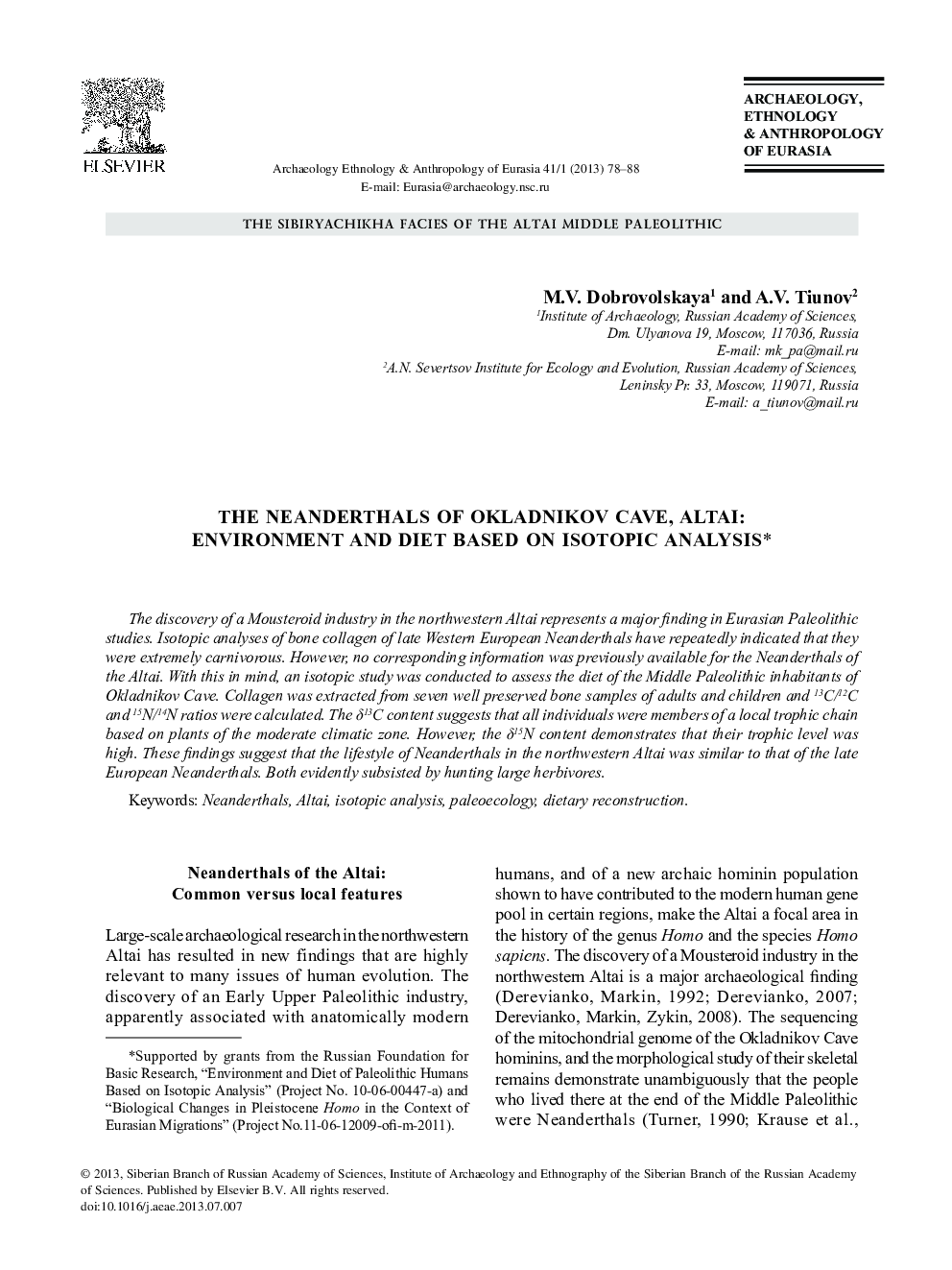| Article ID | Journal | Published Year | Pages | File Type |
|---|---|---|---|---|
| 1034572 | Archaeology, Ethnology and Anthropology of Eurasia | 2013 | 11 Pages |
The discovery of a Mousteroid industry in the northwestern Altai represents a major finding in Eurasian Paleolithic studies. Isotopic analyses of bone collagen of late Western European Neanderthals have repeatedly indicated that they were extremely carnivorous. However, no corresponding information was previously available for the Neanderthals of the Altai. With this in mind, an isotopic study was conducted to assess the diet of the Middle Paleolithic inhabitants of Okladnikov Cave. Collagen was extracted from seven well preserved bone samples of adults and children and 13С/12С and 15N/14N ratios were calculated. The δ13С content suggests that all individuals were members of a local trophic chain based on plants of the moderate climatic zone. However, the δ15N content demonstrates that their trophic level was high. These findings suggest that the lifestyle of Neanderthals in the northwestern Altai was similar to that of the late European Neanderthals. Both evidently subsisted by hunting large herbivores.
